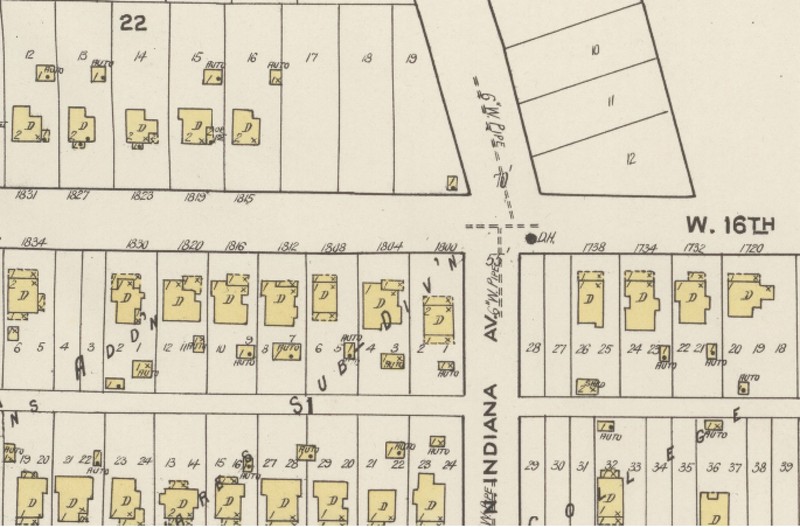Hoolie Davis' Home
Introduction
Text-to-speech Audio
Henry Bowman Otto Davis, "Hoolie," was a white playmate of Ralph Ellison and the two shared a love of electronics and radio gadgetry. The son of Rev. Franklin Davis of St. John's Episcopal Church, Hoolie was in poor health and his parents appreciated Ralph's friendship. Ellison said the well-educated Hooolie challenged him intellectually and gave him insight into the world of white people.
Images
Detail Map of 1823 NW 16, Sanborn Fire Insurance Map from Oklahoma City, Oklahoma County, Oklahoma

Backstory and Context
Text-to-speech Audio
“Like so many kids of the twenties, I played around with radio—building crystal sets and circuits consisting of a few tubes, which I found published in radio magazines. At the time we were living in a white middle-class neighborhood [on 17th Street], where my mother was custodian for some apartments, and it was while searching the trash for cylindrical ice-cream cartons which were used by amateurs for winding tuning coils that I met a white boy who was looking for the same thing. I gave him some of the things I’d found and we became friends…[H]is father was pastor of the leading Episcopal church in Oklahoma City at that time…[H]is nickname was Hoolie and for kids of eight or nine that was enough. Due to a rheumatic heart Hoolie was tutored at home and spent a great deal of time playing by himself…For all of his delicate health, he was very intelligent and very alive. It didn’t take much encouragement from his mother, who was glad to have someone around to keep him company, for me to spend much of my free time helping with his experiments. By the time I left the community, he had become interested in short-wave communication and was applying for a ham license. I moved back into the Negro community and began to concentrate on music, and was never to see him again, but knowing this white boy was a very meaningful experience. It had little to do with the race question as such, but with our mutual loneliness and a great curiosity about the growing science of radio. It was important for me to know a boy who could approach the intricacies of electronics with such daring and whose mind was intellectually aggressive. Knowing him led me to expect much more of myself and of the world.”
Sources
Ellison, Ralph. Shadow and Act. New York City, New York. VIntage, 1964.
https://www.loc.gov/resource/g4024om.g4024om_g07202192202/?sp=77&r=0.083,0.782,0.512,0.288,0
